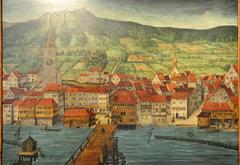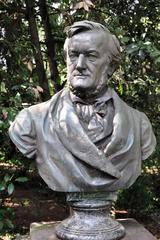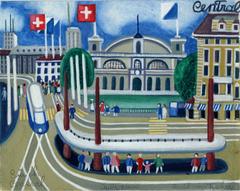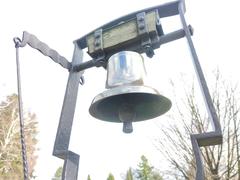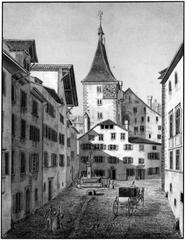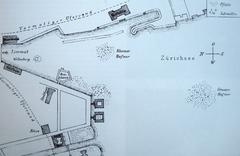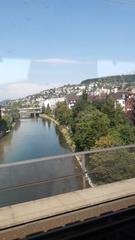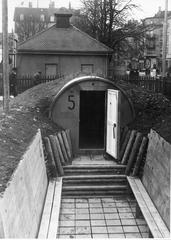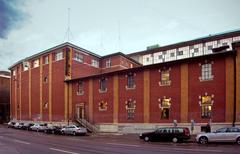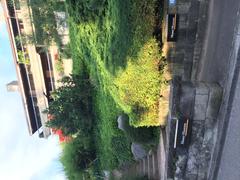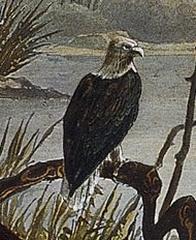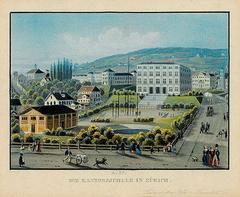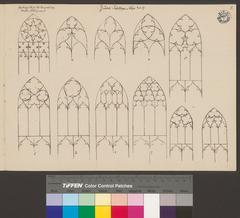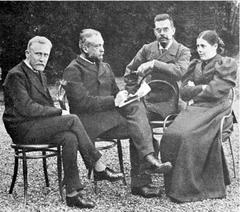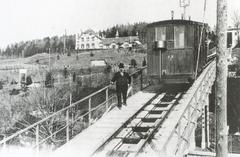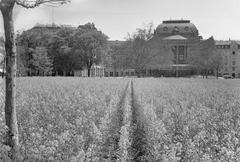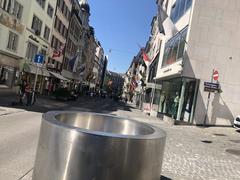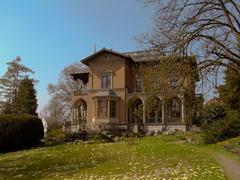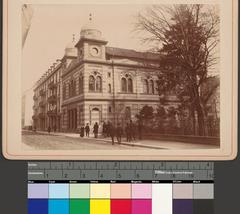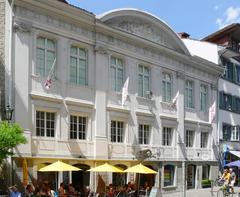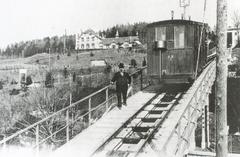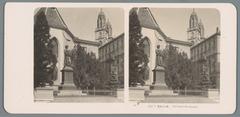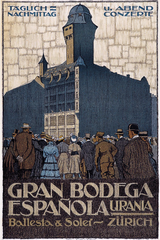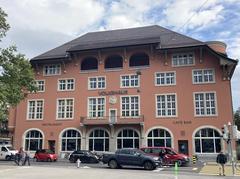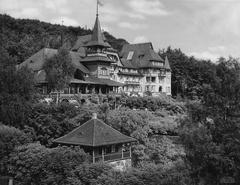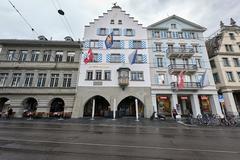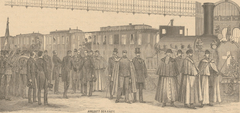Zürich Zoo Visiting Hours, Tickets, and Travel Guide to Zürich Historical Sites
Date: 14/06/2025
Introduction: Zürich Zoo at a Glance
Nestled in the vibrant city of Zürich, Switzerland, Zürich Zoo (Zoo Zürich) is a leader in wildlife conservation, education, and immersive visitor experiences. Established in 1929, it has grown from a modest park to a sprawling 27-hectare sanctuary, now home to over 400 species and around 4,000 animals. The zoo’s mission is rooted in biodiversity preservation, scientific research, and environmental stewardship.
Visitors enjoy naturalistic habitats, such as the renowned Masoala Rainforest Hall and Lewa Savannah, both designed to closely replicate native ecosystems. The zoo’s forward-thinking approach is showcased by its latest projects, including the Panterra big cat enclosure and the visionary Development Plan 2050. Dedicated to global conservation, Zürich Zoo partners with organizations like Lewa Wildlife Conservancy in Kenya and runs crucial breeding and research initiatives.
This guide covers the zoo’s rich history, signature attractions, practical visitor information—including Zürich Zoo visiting hours and tickets—travel tips, accessibility, and suggestions for exploring nearby Zürich historical sites. Whether you’re planning a family day or seeking insight into conservation, this comprehensive resource will help you make the most of your visit (Zoo Zürich Official, Britannica, Lonely Planet).
Table of Contents
- Discover Zürich Zoo: Overview and History
- Key Habitats and Exhibits
- Conservation, Research, and Education
- Visitor Information: Hours, Tickets, Accessibility
- Travel Tips and Nearby Zürich Attractions
- Frequently Asked Questions (FAQ)
- Development Plan 2050: Vision for the Future
- Summary
- Sources and Further Reading
Discover Zürich Zoo: Overview and History
Early Foundations and Vision
Zürich Zoo opened in 1929, initiated as a privately owned zoological park with public funding from the city and canton of Zürich. Its original 10-hectare grounds housed a small but diverse animal collection, reflecting early 20th-century trends toward naturalistic animal enclosures and public education (Britannica). The founding vision balanced the display of exotic species with the promotion of scientific understanding and biodiversity respect.
Expansion and Modernization
During the 20th century, Zürich Zoo expanded its grounds and animal collection, emerging as a leading institution for rare and endangered species. By the century’s end, it featured over 2,100 animals and more than 380 species, including breeding groups of Humboldt penguins, vicuñas, snow leopards, and Arabian oryx (Britannica; Lonely Planet). The zoo’s scientific reputation was further strengthened when it became the official repository for the vicuña studbook.
Key Habitats and Exhibits
Masoala Rainforest Hall
Opened in 2003, the Masoala Rainforest Hall is a pioneering, immersive exhibit spanning 11,000 square meters. It replicates the biodiversity of Madagascar’s Masoala Peninsula, offering a tropical experience year-round (Zürcher Museen). Here, visitors encounter free-roaming lemurs, chameleons, turtles, and rare birds amid lush vegetation. Elevated walkways and observation decks provide panoramic views, and interpretive displays educate about rainforest conservation (zoo.ch).
Kaeng Krachan Elephant Park
Inaugurated in 2014, this 11,000-square-meter habitat models Thailand’s Kaeng Krachan National Park, providing Asian elephants with expansive outdoor and indoor spaces, bathing pools, and mud wallows (Swiss Family Fun). Visitors can observe the elephants both above and below water, with daily keeper talks explaining conservation challenges and the zoo’s breeding successes.
Lewa Savannah
The Lewa Savannah, opened in 2020, authentically recreates the Kenyan savannah over 5.6 hectares. It houses giraffes, rhinos, zebras, ostriches, and antelopes, reflecting the zoo’s conservation partnership with the Lewa Wildlife Conservancy (Zürcher Museen). Interactive educational panels highlight anti-poaching initiatives and habitat restoration (myswitzerland.com).
Panterra Big Cat Enclosure
Scheduled for opening in 2025, Panterra is a state-of-the-art complex for lions, tigers, and snow leopards. While the cats are separated for safety, the 17-meter “catwalk” bridge allows for natural movement and enrichment (SRF). Panterra’s design epitomizes modern animal welfare and immersive visitor engagement.
Conservation, Research, and Education
Zürich Zoo leads or participates in at least eight global conservation projects, supporting endangered species and their habitats (Zürcher Museen). Conservation efforts are closely tied to major exhibits, such as the Masoala Hall’s support for Madagascar reforestation. The zoo collaborates with universities and research institutes, advancing knowledge in animal behavior, genetics, and breeding techniques (zoo.ch).
Education programs span from school workshops to guided tours and interactive exhibits. The motto “Those who know animals will protect them” underpins the zoo’s commitment to fostering environmental stewardship (zoo.ch).
Visitor Information: Hours, Tickets, Accessibility
Visiting Hours
- Summer (April–October): 9:00 AM to 6:00 PM (sometimes extended to 7:00 or 8:00 PM)
- Winter (November–March): 9:00 AM to 5:00 or 6:00 PM
- Open daily, 365 days a year
Check the official website for current hours and any special closures.
Ticket Prices
- Adults: CHF 26
- Youth (16–25): CHF 19
- Children (6–15): CHF 13
- Children under 6: Free
- Seniors, Students, Disabled: CHF 19
Discounts apply for families and groups. Buy tickets online to avoid queues (Zoo Zürich).
Accessibility
- Wheelchair-accessible paths, ramps, and restrooms
- Sensory maps and assistance services available
- Service animals permitted
- Most exhibits accessible for all abilities
Travel Tips and Nearby Zürich Attractions
- Getting There: Easily accessible by public transport (tram lines 6, 10, and 12). Parking available, but limited on weekends (switzerlandbylocals.com).
- Dining: On-site restaurants include Restaurant Masoala, Thailodge Kaeng Krachan, and various snack bars.
- Family Amenities: Playgrounds, picnic areas, and the Zoolino petting area for children.
- Combine Your Visit: Explore nearby Zürich historical sites such as the Old Town (Altstadt), Lake Zürich promenade, Kunsthaus Zürich, and the Botanical Garden for a full day of culture and nature (All About Swiss).
- Travel Tip: Arrive early for popular exhibits; weekdays are less crowded.
Frequently Asked Questions (FAQ)
Q: What are the Zürich Zoo opening hours?
A: Generally 9:00 AM to 6:00 PM in winter, extended to 7:00 or 8:00 PM during summer. Check the official site for updates.
Q: How do I buy Zürich Zoo tickets?
A: Purchase online via the official website or at the entrance. Online purchase is recommended.
Q: Is Zürich Zoo wheelchair accessible?
A: Yes, with accessible paths, restrooms, and assistance available.
Q: Are pets allowed?
A: Only service animals are permitted for the safety of the zoo’s residents.
Q: Are there guided tours and events?
A: Yes, guided tours, animal feeding sessions, and special events are offered; check the events calendar for details.
Q: Are there dining options inside the zoo?
A: Multiple restaurants and cafés are available on site.
Q: Can I take photographs?
A: Yes, photography for personal use is encouraged; professional shoots require permission.
Development Plan 2050: Vision for the Future
Zürich Zoo’s Development Plan 2050 outlines a roadmap for sustainable growth and leadership in conservation, education, and visitor experience. The plan is anchored on four pillars:
- Animal Welfare: Continued investment in naturalistic habitats and behavioral enrichment.
- Conservation & Research: Expansion of global partnerships and breeding programs.
- Education: Enhanced programming and interactive, digital learning experiences.
- Sustainability: Green operations, energy efficiency, and resource management.
Key projects include the Central African Rainforest exhibit (future home to gorillas), Pantanal Aviary, and an aerial cableway to connect different zoo sections, with all new developments designed to serve both animals and people (Zoo Zürich, Thrillophilia).
Summary
Zürich Zoo’s evolution from a traditional menagerie to a global leader in conservation and education is marked by its immersive exhibits, scientific achievements, and visionary planning. The zoo offers memorable experiences for all ages, supports international conservation projects, and sets benchmarks for animal welfare and sustainability. Plan your visit by checking the latest hours and ticket prices, exploring nearby Zürich historical attractions, and leveraging digital resources such as the zoo’s app for maps and updates.
Whether you’re a local, tourist, or conservation advocate, Zürich Zoo provides a vibrant, educational, and inspiring experience—championing a harmonious relationship between animals, people, and the planet (Zoo Zürich Development Plan 2050, Swiss Family Fun, SRF).
Sources and Further Reading
- Zoo Zürich Official
- Zürcher Museen
- Britannica
- Lonely Planet
- Swiss Family Fun
- SRF
- PlanetWare
- Switzerland By Locals
- myswitzerland.com
- Thrillophilia
- Wonderful Wanderings
- All About Swiss
- Tourist Places Guide



